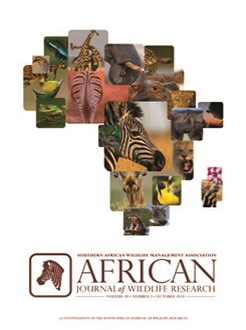Across southern Africa, many populations of the highly-mobile common eland (Tragelaphus oryx) are limited to small, fenced protected areas. We studied such a population at Kgaswane Mountain Reserve (KMR), South Africa, using radio-collared animals to better understand eland range use in a landscape with restricted movement. Placement of home ranges within the reserve changed from favouring woodland to dry grassland after the beginning of the wet season, while wet grassland was favoured all year. Habitat use within home ranges indicated an interaction between vegetation types and elevation that changed with season: low-elevation selection for dry grassland, open shrubland and woodland changed to selection for wet and dry grassland; high-elevation selection for open shrubland alone changed to selection for both open shrubland and woodland. Despite the fenced nature of KMR, eland appeared to have sufficiently flexible behaviour to follow landscape use and seasonal home range changes demonstrated by eland in less restrictive environments. Management activities that promote fine-scale heterogeneity and varying levels of woody cover might compensate for lack of mobility where fences limit broad-scale movements.
BioOne.org will be down briefly for maintenance on 17 December 2024 between 18:00-22:00 Pacific Time US. We apologize for any inconvenience.
How to translate text using browser tools
20 July 2020
Seasonal Habitat Selection by Eland in an Insular Nature Reserve
Jason P. Marshal,
Giacomo D'ammando,
Francesca Parrini
ACCESS THE FULL ARTICLE
Common eland
habitat selection
home range
space use






